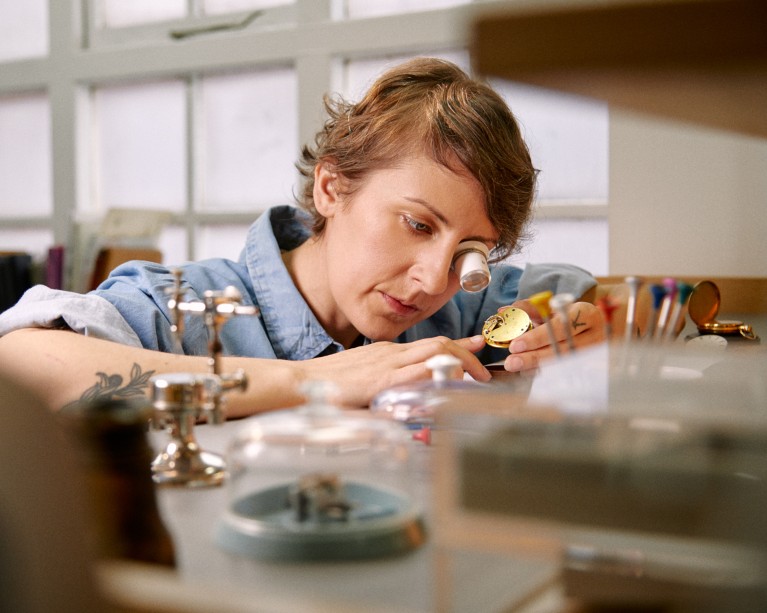I dropped out of secondary school to run away to art school, where I studied jewellery and silversmithing. But I missed science and technology, so at 19, I switched to watchmaking. I got my master’s degree in the history of art and design, and my PhD in eighteenth-century watch production and accessibility.
I made and repaired watches during both my master’s and doctoral programmes. It’s great to have a qualification to back up what you do — my studies have enriched my work.
I call myself a watch doctor, and I’m known as a restorer and watchmaker: I take antique and vintage pieces and restore the watch mechanisms and make new watches using heritage machinery.
Restoration is working out exactly what has made a watch stop and why, and then stripping the device and bringing it back to life again. That process can take anywhere from a few hours to a couple of years.
On a day-to-day basis, restorers also have to be historians. We need to understand how things are made to restore them.
In this picture, I’m examining a watch movement — a part that goes into the casing and is kind of like the engine. Once I work out what’s wrong, I take the watch apart. There can be thousands of parts in the watch. Some are very, very tiny. Everything I use is also in miniature. I have tiny screwdrivers, tweezers and movement holders. I have hair-fine oilers that I use on all the bearings to reduce friction and wear.
Sometimes I can repair the broken part, but occasionally I have to make a replacement by hand. I have special solutions and solvents to clean watches so that they’re beautiful, sparkly and gold again.
Classic watchmaking and the restoration of old watches are quite rare in the United Kingdom.
Women are also quite rare in this industry. I’m the only independent female watchmaker in the United Kingdom, and there is only a tiny number of us around the world.


 Restoring Notre Dame’s ‘magical’ windows
Restoring Notre Dame’s ‘magical’ windows
 Glass act
Glass act
 The women who cracked science’s glass ceiling
The women who cracked science’s glass ceiling
 The business of science
The business of science








